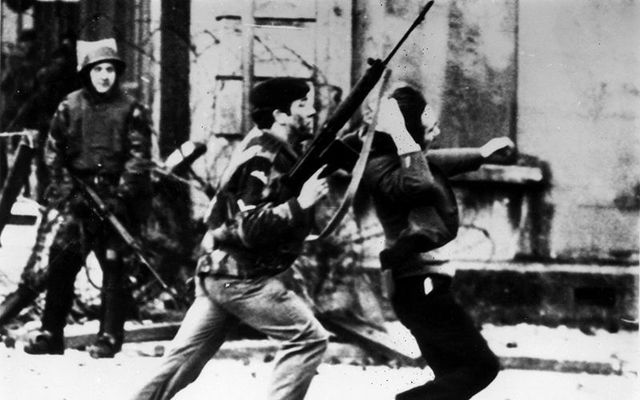A young student doctor on the ground in Derry in 1972 recalls the shock and disbelief of his colleagues in the aftermath of Bloody Sunday and how the news of its unjustness stopped him in his tracks.
January 1972: I was a student radiographer in my 2nd year at the Londonderry School of Radiography at Altnagelvin Hospital, in Derry, in January 1972. My year was a broad reflection of life in Northern Ireland at that time, a mix of Roman Catholic and Protestant students essentially united in a healthcare profession that enjoyed prestige in the community.
As students, we attended post-mortems to take notes for the coroner or pathologist – that was useful in our studies of anatomy and valuable in that we were paid for the service and, at that time, paid £1 sterling which translated into four or five pints at Deehan’s pub, our “local” near the hospital.
We lived at St. Columb’s Hospital in a residence and were bussed each day to and from Altnagelvin. I was a bit older than my fellow students, most of whom had come directly from High School. I had spent two years in a seminary studying for the Catholic priesthood before I had a long conversation with God and we agreed that this was not where I was supposed to be. I applied for entrance to radiography and went to Derry – the other program was in the Royal Victoria Hospital in Belfast but did not accept male students (I am still not sure why!).
On Sunday, January 30, 1972, everything in Derry changed. I was at a Chinese restaurant that afternoon with a current female prospective girlfriend and brought her back to St. Columb’s after lunch. Then we found out that a civil rights march in Derry had been responded to by the Paratrooper Regiment of the British Army and 26 unarmed people had been shot. All were of service age (eligible for army enrolment) and 13 had been killed.
"Bloody Sunday began as a peaceful - but illegal - demonstration by some 10,000 people organized by the Northern Ireland Civil Rights Association in opposition to the British government’s policy of interning suspected members of the IRA without trial."
The overall sense of shock was palpable. On the way to Altnagelvin on Monday morning, one of my fellow students asked, in her shock, “Why couldn’t they just have stayed home?”
At the hospital, one of our students (who happened to be English) was sent to the mortuary to assist with the postmortems. I went over later that morning to see for myself – the mortuary was small and designed to take maybe four corpses – there were 13 on the floor and members of the Royal Ulster Constabulary (RUC) taking smear samples from the corpse hands, testing for residuals from firearms.
The Paratroopers claimed that the shot individuals had opened fire on them and they retaliated in kind. (That claim was subsequently proven false.) The British government established an inquiry under the British Chief Justice Lord Widgery and his report concluded:
"the demonstrators fired the first shot but that none of those dead appeared to have carried weapons. The Derry coroner, however, was unequivocal, calling the deaths 'unadulterated murder'".
Two decades later, another British Government called a second report.
The 5,000-page Saville Report found the first shot in the vicinity of the march was fired by the British Army. Though there was some firing by Republican paramilitaries, it did not provide any justification for the shooting of the civilian casualties.
It also found that none of the soldiers had fired in response to attacks by those throwing projectiles and that none of those who were shot had posed any threat to the soldiers.
On a personal level, I took the next day off and went across the border into the Republic of Ireland to a historical site in Country Donegal, Grianan of Aileach, and simply sat there recharging my batteries. That day will live on in the memory of many for the rest of our lives.
* Quotes taken from "Bloody Sunday | Summary, Date, & Facts | Britannica"




Comments